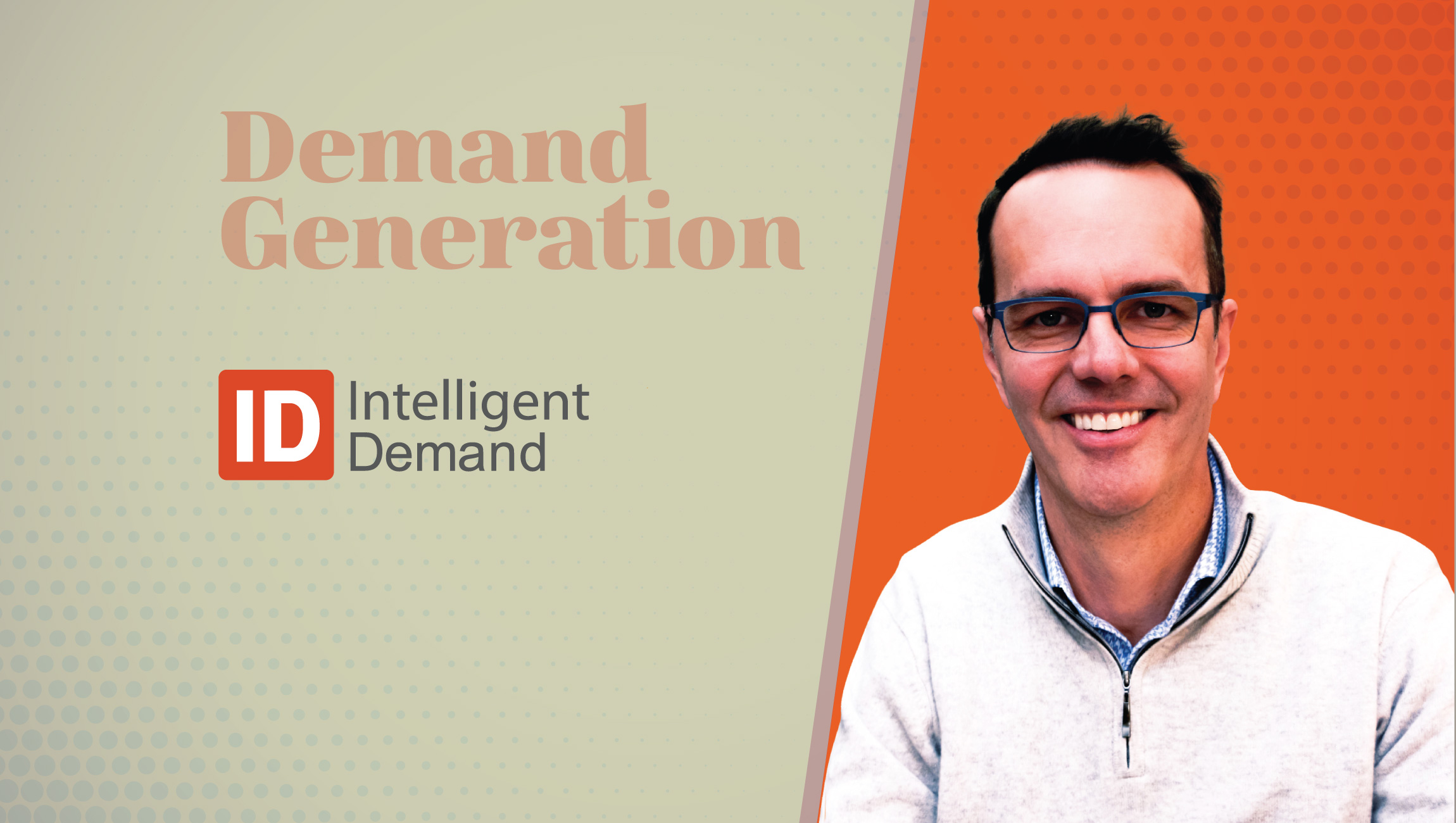Tell us about your role and how you got here.
Grand Visual launched in 2005 and was the first production company specializing in digital OOH creative at the time. It was the same year that the first run of digital escalator panels was installed on the London Underground and the potential of this fantastic digital canvas was just starting to make its mark in London and many other cities around the world. For Grand Visual, this moment marked the start of a journey in creative thinking, technology expertise and production techniques for digital OOH.
At this time, only a few media owners could facilitate dynamic content delivery, and each had different processes as well as variances in format specification and file delivery. This was a major limitation when it came to the medium’s ability to run timely, multi-network, national or international campaigns. That’s why we developed OpenLoop — to enable advertisers to easily update creative at scale.
OpenLoop was the industry’s first dynamic DOOH campaign management platform. Its road test came during the 2010 World Cup for Nike’s “Write the Future” campaign that tracked England’s progress during the tournament and published live post-match commentary targeting fans on their way home from the game. It marked an important milestone for the industry. Instead of different networks and formats working in silos, DOOH could now react in real-time with relevant copy to a broadcast audience.
There’s been some momentum to this. In 2017, we launched QDOT as a standalone AdTech business providing smarter campaign management platforms for digital out of home. QDOT brought our well-established industry-leading platforms and workflow intelligence systems to the whole market, helping advertisers and agencies to navigate the complexities inherent in the diverse digital OOH ecosystem.
The timing was good. The DOOH market had reached a size and maturity where media was being planned and bought locally, with creative concepts, production, and distribution becoming more international. This shift meant we needed to be focused on the tools and systems required to facilitate the medium’s true creative potential as a digitally connected, data-rich, intrinsic part of the smart city landscape.
As a leader in the AdTech industry, what message would you give to other COO and VP of Products in the start-up ecosystem?
I would not presume to tell anyone how to tackle the particular market they are focused on. All I can say is that our approach has been to be single-minded and to develop an absolutely granular understanding of the market that we wish to enhance with our technology. To make the most of that insight we have built our own team of brilliant developers and integrated them fully within the group. This ensures that our technology roadmap reflects market need and that product development is not siloed.
Tell us more about your Wrapped Campaign and how it was received by the audience.
Spotify Wrapped was a dream project — loved by music fans, driven by data and ticking all the boxes of a good UGC-powered, personalized, and socially engaged campaign. Since its inception, Wrapped has underscored the impact of OOH and how digital brands are embracing the medium more than ever before.
Adding digital OOH was a way of amplifying its message with fresh and timely content that rewarded participants with their name in lights, instantly. The campaign was well received with 7,460 respondents submitting their annual music choices to digital billboards across New York, London, Toronto, Paris, Melbourne, and Berlin.
How was your role at Grand Visual different from the one you have at QDOT?
Grand Visual is a creative services business and, therefore, the work there is a project-based, client specific and relatively short in turnaround times. At QDOT, we are building platforms that will be useful to the whole medium and for the long term. So, it is fundamentally a different outlook and a different business model. The great thing is that everything we have learnt over thirteen years in the Grand Visual business is applicable and relevant to our mission at QDOT. My role at QDOT is to help guide the team as our products develop and to nurture our long-term relationships with clients and partners.
How do you see the evolution of advertising technologies impacting the SaaS and Cloud ecosystem? What role does QDOT play in this ecosystem?
QDOT is an essential part of the distribution mechanic. QDOT is an acronym for Quality Assurance, Distribution, Optimization and Tracking. In a nutshell, QDOT’s platforms provide advertisers and agencies with all the tools needed to efficiently deliver, optimize and track campaigns with real-time, reactive messaging and scheduling capabilities.
We work with all stakeholders in the digital OOH ecosystem and have established relationships with some of the largest OOH media specialists in the world, as well as direct contracts with world leading brands. Our campaign management and distribution platforms OpenLoop and FileDrive, are integrated with all the main OOH media owners, and have already delivered thousands of campaigns across more than 40 countries, for brands such as Coca-Cola, McDonald’s, and Google.
With these AdTech systems now in place — more advertisers are using the medium in a dynamic and tactical way, increasing the complexity of OOH campaigns and driving up the volume of creative for fulfilling campaigns. With that complexity comes the need to track and measure campaigns. PlayTrack provides independent 3rd party reporting platform and offers the level of transparency and accountability needed for the future of programmatic digital OOH.
Which leaders in the industry do you closely work with? How do they help you stay close to the business actions?
We work with all the stakeholders in the digital OOH ecosystem from media owners, agencies and OOH media specialists through to the creatives, data providers and brands direct. Each player has their own specific needs and agenda and it is vital to chat through these even if on the face of it we may not directly interface.
What startups in the technology ecosystem are you watching/keen on right now?
We’re always interested in new start-ups and as DOOH becomes more agile and reactive, we are all focused on making programmatic a reality for the medium. This includes Blockchain technology solutions, and anything that will make an impact on media planning, buying and attribution of the DOOH ecosystem, including the new breed of media agencies such as Truth, which are utilizing blockchain smart contract technology, to provide 100% transparency for clients.
What tools does your marketing stack consist of in 2019?
The marketing team uses Asana to collaborate internally and then employs the usual suspects such as Hootsuite, HubSpot, MailChimp, YouTube, and Google Analytics to publish and track our news externally.
What are your predictions on the role of Workplace Automation and Marketing Intelligence tools? How do you leverage these at your workplace?
As our business is international and our office locations and time zones have expanded, this is certainly an area we have taken more interest in of late. As well as building our own systems, we use other web applications to help teams collaborate smoothly and manage projects across multiple stakeholders, markets and timelines.
How do you prepare for an AI-centric world as a technology leader?
As a global medium, DOOH requires a global delivery system to accelerate its adoption as a dynamic, data-driven and scalable medium with seamless workflows. We’re future-proofing the industry with our programmatic-ready suite of creative fulfillment and independent reporting tools, opening up the medium’s compelling flexibility and providing the transparency and accountability needed to attract new advertisers.
QDOT platforms are being used internationally for delivering smart campaigns. This year alone, OpenLoop has delivered programmatically driven digital OOH campaigns for Google, McDonald’s, Coca-Cola, Spotify, and Hiscox. And, in the same way, that third-party ad serving was a turning point for trust and investment in online display advertising, PlayTrack provides the level of transparency and accountability needed for the future of programmatic digital OOH.s
So, in terms of the AdTech needed for automated ad-serving and creative fulfillment, the DOOH the industry is ready. Great steps have been made across all the stakeholders involved in OOH workflows, and 2019 will be about deeper integration and setting standards for the industry.
One word that best describes how you work.
“Unison” – I believe that people produce better outcomes working together
What apps/software/tools can’t you live without?
Strava for cycling. Although it’s annoying to see friends posting big rides and fast times.
What’s your smartest work-related shortcut or productivity hack?
Prep well and make decisions!
What are you currently reading?
- “Sea Power” by Admiral James Stavridis – A look at the central role played by the oceans of the world in geopolitical activity through history.
- I usually read current affairs news and industry press with the odd book — mostly on my iPhone on the bus!
What’s the best advice you’ve ever received?
Listen. Consider. Respond. In that order.
Tag the one person in the industry whose answers to these questions you would love to read:
Kim Frank, President at Geopath.
Thank you, Neil! That was fun and hope to see you back on MarTech Series soon.
Neil is the Founder and CEO of Grand Visual, an award-winning production and creative technology company that is driving dramatic evolution across the Digital Out of Home Landscape. With offices in London and New York, Neil has been responsible for many of the ‘wow’ moments the medium has delivered to date.
In 2017, Neil and his team launched QDOT, the first Digital Out of Home campaign management platform for facilitating dynamic, real-time content across multiple formats, networks, and markets. This was the start of programmatically informed creative for DOOH. In2015, Google used OpenLoop alongside its own ad technology, in a trial that delivered the world’s first fully programmatic DOOH campaign — a milestone moment for the outdoor advertising industry.
Neil has featured in BIMA’s Hot 100, writes a tech blog for The Huffington Post, and is a regular contributor to ExchangeWire and ClickZ.
.png)
We are a unique production company providing creative services for digital OOH. We’re made up of experts in creative, technology, production, storytelling, and digital marketing. We craft compelling stories, which maximize the effective use of digital OOH for advertisers and agencies around the globe. Our clients are made up of brand teams, creative and media agencies, as well as businesses who own or operate in public facing environments.

QDOT is an independent ad tech business delivering smarter campaign management for digital OOH at scale. The suite of platforms allows advertisers and agencies to efficiently deliver, track and optimize campaigns with real-time, reactive messaging and scheduling capabilities. QDOT offers some already well-established platforms, which have delivered over 1,600 campaigns across Europe, Asia, Australia and the Americas. QDOT is trusted by some of the world’s largest OOH media buyers including Talon, Kinetic, Omnicom Media Group, MediaCom and Rapport.
The MTS Martech Interview Series is a fun Q&A style chat which we really enjoy doing with martech leaders. With inspiration from Lifehacker’s How I work interviews, the MarTech Series Interviews follows a two part format On Marketing Technology, and This Is How I Work. The format was chosen because when we decided to start an interview series with the biggest and brightest minds in martech – we wanted to get insight into two areas … one – their ideas on marketing tech and two – insights into the philosophy and methods that make these leaders tick.












Comments are closed.